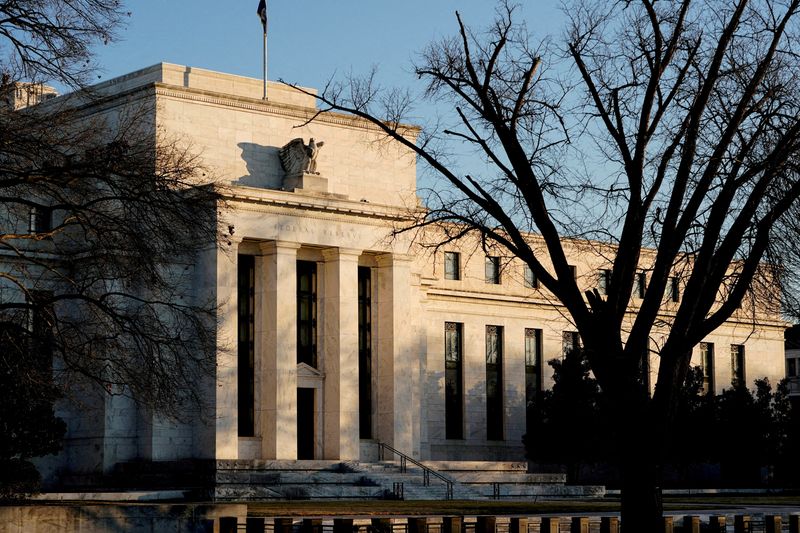By Ann Saphir
(Reuters) -The Federal Reserve won't start easing policy until May, traders bet on Friday, capping a week during which stronger-than-expected economic data and commentary from central bankers chipped away at financial market confidence in the idea of an earlier start to interest-rate cuts.
On Friday, a widely watched measure of consumer sentiment rose to its highest level in 2-1/2 years, and Chicago Fed President Austan Goolsbee said the U.S. central bank won't commit itself to rate cuts until it is surer that inflation is on track to a healthy 2%.
Futures contracts that settle to the Fed's policy rate fell, and now reflect about a 47% chance of a Fed rate cut by March, down from 55% earlier in the day.
Just a week ago the probability of an interest-rate cut in March from the current range of 5.25%-5.5% was seen at nearly 80%, reflecting faster-than-expected declines in inflation. Fed policymakers themselves had also signaled at their December meeting that their rate-hike campaign was likely at an end and that in 2024 they would probably start to reverse course.
In the last week, though, signs of the consumer's continued strength and indications that the inflation battle has not yet been won have eroded confidence in the likelihood that the Fed will pivot all that soon.

Central bankers, in this last week of public commentary before a self-imposed quiet period ahead of their late-January meeting, have also suggested a rate cut may not be imminent, even as they continue to call out progress on the inflation fight and hold the door open to a rate hike a little later in the year.
Traders continue to see a series of rate cuts this year once the Fed gets going, though based on futures contracts are now are betting the Fed may deliver just five 25-basis-point cuts by year-end, a less than the six cuts they had earlier been pricing in.